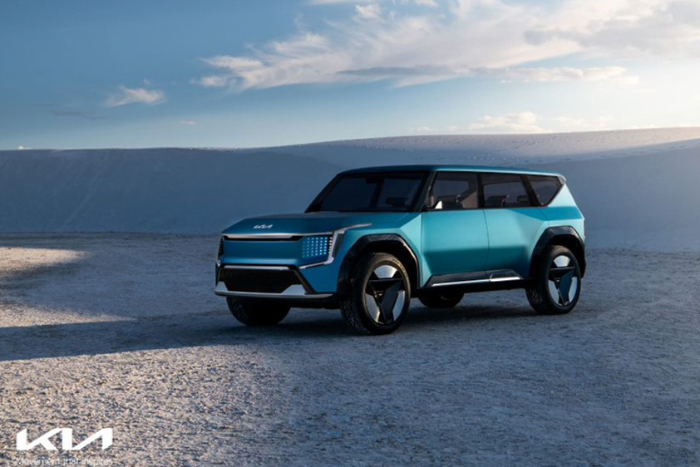Electronic Vehicles (EVs) are already a thing of the present and will continue to be for the future. In fact, the EV market in the Middle East stood at a value of USD40.25 million in 2021 and is expected to reach USD93.10 million by 2027. Locally, Dubai continues to focus on its long-term ambitions towards electrification as it works to enable residents to make more sustainable choices.
Automobile companies like Kia share Dubai’s vision globally, and are taking steps to play their part in helping us all to move more sustainably. This mission is brought to life through the Kia’s Concept EV9, an all-electric SUV concept model combining progressive design, state-of-the-art tech, and an all-electric powertrain.
As Kia works towards a vision for an all-electric line up worldwide by 2040, the company is set to bring 11 electric cars to market by 2026. But what sustainability-focused features does the Concept EV9 hold exactly? And how might they underpin the greener cars of the future?
Sustainable exterior and interior design
The use of recycled materials in cars has come a long way in recent years as the next step in Kia’s achieving carbon neutrality. The next and most important step is getting such materials into as many production models as possible. The Concept EV9 points to what’s possible.
The model is designed in such a way that its interior and exterior manufacturing materials are ecologically balanced. The flooring of the vehicle is made from recycled fishnets, while the seat fabric is constructed from a mix of wool and recycled plastic bottles. Meanwhile, the cabin features vegan leather throughout. Such is the significance of the advancements made in the Concept EV9, Kia plans to gradually reduce the use of animal leather in all its vehicles.
Ultra-fast charging making the move to EVs easier
According to World Economic Forum, consumers are hesitant behind choosing electronic vehicles due to a few reasons, one such being “range anxiety”. This form of anxiety is related to the worry of fewer charging infrastructure or the fear of battery running out before reaching one’s destination. In fact, whether batteries can ever be as fast as pumping gas into a vehicle, has been a debatable topic of discussion online.
In 2022, however, automobile companies such as Kia are increasingly including the technology of ultra-fast charging in their EVs in order to improve their convenience, that ultimately encourages the switch to sustainable mobility. For instance, Kia’s own Concept EV9 leans on next-generation ultra-fast charging technology for peak performance. With its 350-kW charger, the battery electric powertrain is capable of replenishing energy from 10 per cent to 80 per cent in around 20 to 30 minutes, and thus can run for about 300 miles.
Hence, adoption of this technology has eliminated range anxiety and other common issues or misconceptions associated with EVs that would generally discourage sustainable mobility.
Digital ‘tiger’ face — with solar panels
The traditional tiger face grille adorning Kia’s vehicles is now a familiar part of the brand’s design signature, and Kia’s Concept EV9 takes it a step further.
Automobile makers today are researching the potential of solar power through curved solar roof systems. Kia’s Concept EV9 already includes this form of energy across its grille. Narrowing in on the hood vent duct area, the Concept EV9’s solar grille recuperates electric energy on the road. The feature provides the model with an alternate source of energy when not close to a charging station, reducing consumption overall.
With increased social awareness surrounding sustainable living, growing public expectations on the automobile sector, and ambitious government targets, car manufacturers are ramping up their green efforts. Kia’s advanced Concept EV9 provides a glimpse into the future at how today’s revolutionary sustainability-focused technology and features could become the norm.

COMMENTS